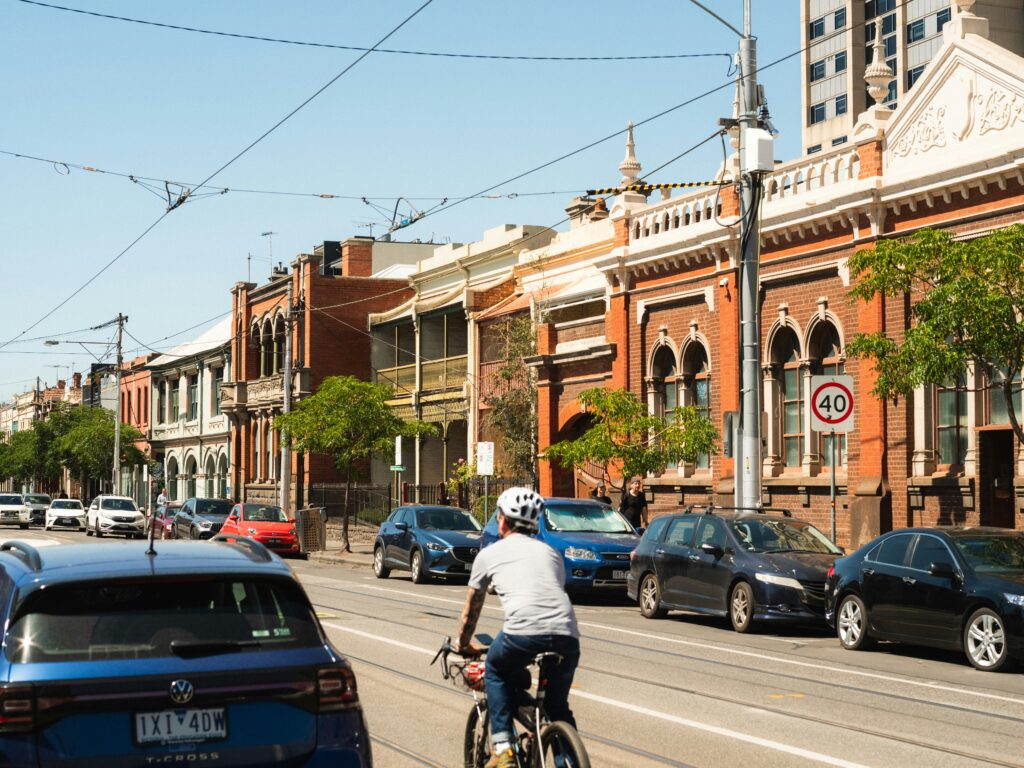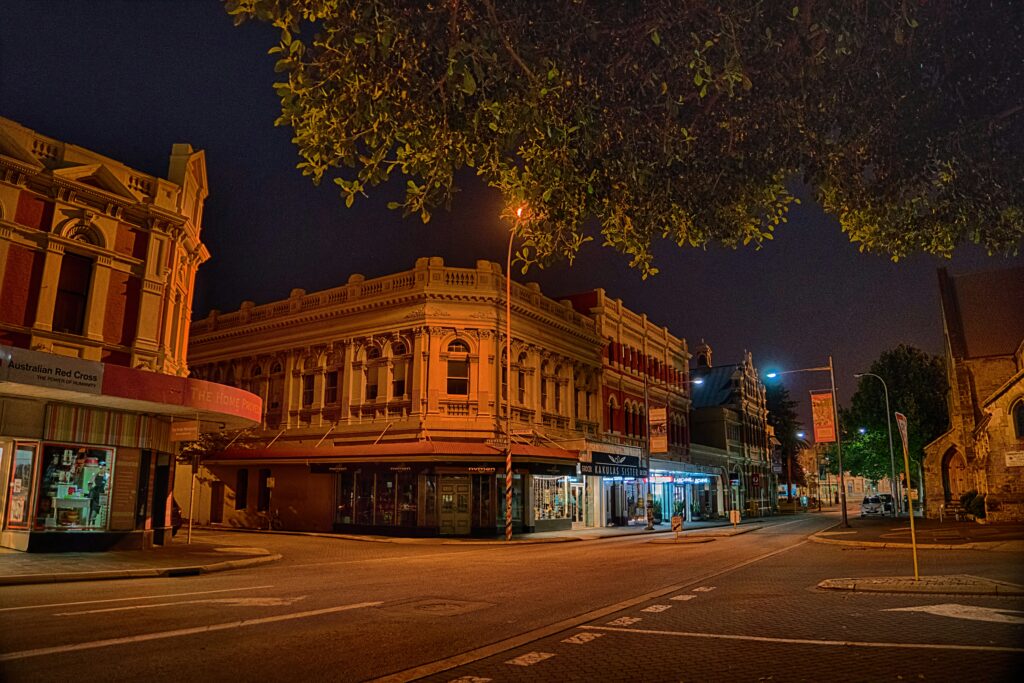Heritage and Housing: Understanding Victoria’s Planning Reforms

Feature Image: Doug Bagg. Source: unsplash
In August 2025, we released a joint statement with the Royal Historical Society of Victoria calling for a balanced approach to planning reforms in Victoria—one that delivers more housing while protecting our heritage, character, and green spaces. The statement, titled “More Housing and Heritage Must Go Hand in Hand,” marked the first time our two organisations united to address planning policy, reflecting the seriousness of the challenges ahead.
Our message has been clear throughout consultation on the Plan for Victoria: we support increased housing supply, particularly near jobs, services, and public transport. However, we remain deeply concerned that the reforms being enacted to accommodate new density targets—especially the new Housing Choice and Transport Zone (HCTZ)—risk undermining the very qualities that make Victoria’s cities and towns desirable places to live.
A Call for Thoughtful Reform
Rather than accepting the divisive “NIMBY (Not In My Back Yard) versus YIMBY (Yes In My Back Yard)” debate, we advocate for TIMBY—Thoughtfully In My Back Yard. This approach recognises that heritage is not a barrier to housing, but a foundation for building vibrant, attractive, and enduring communities.
The response was overwhelming, with mentions across major city newspapers and views from thousands of people on social platforms. So, on 26th August the Royal Historical Society of Victoria hosted our joint public meeting, featuring three of Victoria’s leading planning and heritage experts: Scott Walker, Director of Urban Living at the City of Boroondara; Nigel Lewis, a renowned Melbourne heritage architect since 1976; and Emeritus Professor Michael Buxton from RMIT University. Their presentations described in detail the history of heritage protections in Victorian Planning and why these new planning reforms — which have prompted widespread concern about potential risks to built and natural heritage — will reverse much of work done by heritage advocates like the National Trust in the late 1900s.

Image Source: Auburn Village.com
Understanding the Planning Reforms
The Victorian Government’s planning reforms stem from a genuine challenge: accommodating 8 million people in future Melbourne while addressing housing supply and affordability. The reforms include housing targets, planning for 60 “activity centres” across Victoria, new development standards, and significantly, the introduction of the new Housing Choice and Transport Zone (HCTZ).
Boroondara, for example, faces a target of 65,500 dwellings—a 90% increase over 27 years, triple the existing rate. While the scale of this challenge is substantial, our concern lies in how these targets will be achieved.
The Constructed Conflict
The most pressing issue is the inherent conflict between the HCTZ, and existing Heritage Overlays. The HCTZ – jokingly called the Ham Cheese and Toastie Zone by some – is a new planning zone designed to increase housing density around activity centres and well-serviced locations close to employment, services, and public transport. Unlike the existing Neighbourhood Residential Zone, which limits development to two storeys and includes decision guidelines around retention of neighbourhood character, the HCTZ allows three to six-storey development with no similar neighbourhood character guidelines that acted as an ally to support Heritage Overlay considerations.
This creates a fundamental problem where a Heritage Overlay falls within a Housing Choice and Transport Zone: the HCTZ’s purpose is to provide “housing at increased densities” – through faster development approvals with less design oversite – while Heritage Overlays exist to protect places of heritage significance from unsympathetic developments. When both controls apply to the same site, they pull in opposite directions.
While the State Government has maintained that the activity centres would continue to recognise heritage and environmental and neighbourhood character overlays, there is no clarity on how the Heritage Overlay will fare in decision making when balancing competing objectives and what tools will be put in place to ensure heritage considerations are not overridden.
The government’s own standing committee tasked with advising the Minister for Planning on regarding the activity centres warned that “in the vast majority of cases, residential development between three and six storeys will be inconsistent with the objectives and purposes of the Heritage Overlay” (Referral #1 report, p.28). The Committee explicitly recommended that the new zones should not be applied to heritage areas.
Despite this expert advice, the reforms proceeded. A parliamentary inquiry subsequently found that “concerns expressed by many submitters that heritage and heritage values are at serious risk of being compromised by these planning amendments are valid” (Findings and Recommendations, p. xii).

Image Source: Property.com
Unintended Consequences
As the state government moves further into the implementation phase, several concerning outcomes are emerging:
Loss of Unassessed Heritage Places: By exempting certain developments from notice and review requirements, sites with potential heritage value but no formal Heritage Overlay protection may be demolished before proper assessment. This is particularly troubling in areas where heritage gap studies have begun but not yet been completed.
Degradation of Heritage Streetscapes: The “deemed to comply” provisions—which allow developments that meet specific technical standards to proceed without full planning assessment—prioritise quantitative measurements (such as setbacks and building heights) over the qualitative considerations essential for heritage conservation. This risks undermining the integrity of entire heritage precincts and streetscapes, where context, materials, scale, and character require careful, case-by-case evaluation.
Unsustainable Development: The absence of clear guidance supporting adaptive reuse of existing and heritage buildings incentivise developers to work from a vacant site, and may increase demolition rates. Abandoning the reuse first mindset results in unsustainable development methods that release embodied carbon and waste existing built fabric when new developments are prioritised over adaptive re-use, such as in the Great Design Fast Track program.
Inconsistent Implementation: The lack of clear guidance on heritage integration, will result in a high risk of inconsistent application across different municipalities.

Moving Forward
We continue to advocate that heritage and landscape considerations should be at the forefront of any decision making around increased density in our towns and suburbs. In particular, we are seeking clarity and guidelines in relation to interactions between the Heritage Overlay and the HCTZ and more transparency around how heritage is being championed in other recent government initiatives like the Great Design Fast Track, and new tree protection measures.
The challenge before us is not whether to provide more housing—we must—but how to do so in ways that preserve what makes our communities worth living in. Good planning does not occur when Heritage is ignored and perceived as a barrier, it provides the essential ingredients of sustainable, liveable cities.
As the tile of Professor Buxton’s talk noted; we must avoid “demolishing a city to save it.” Thoughtful reform is not only possible—it is essential.
+ There are no comments
Add yours